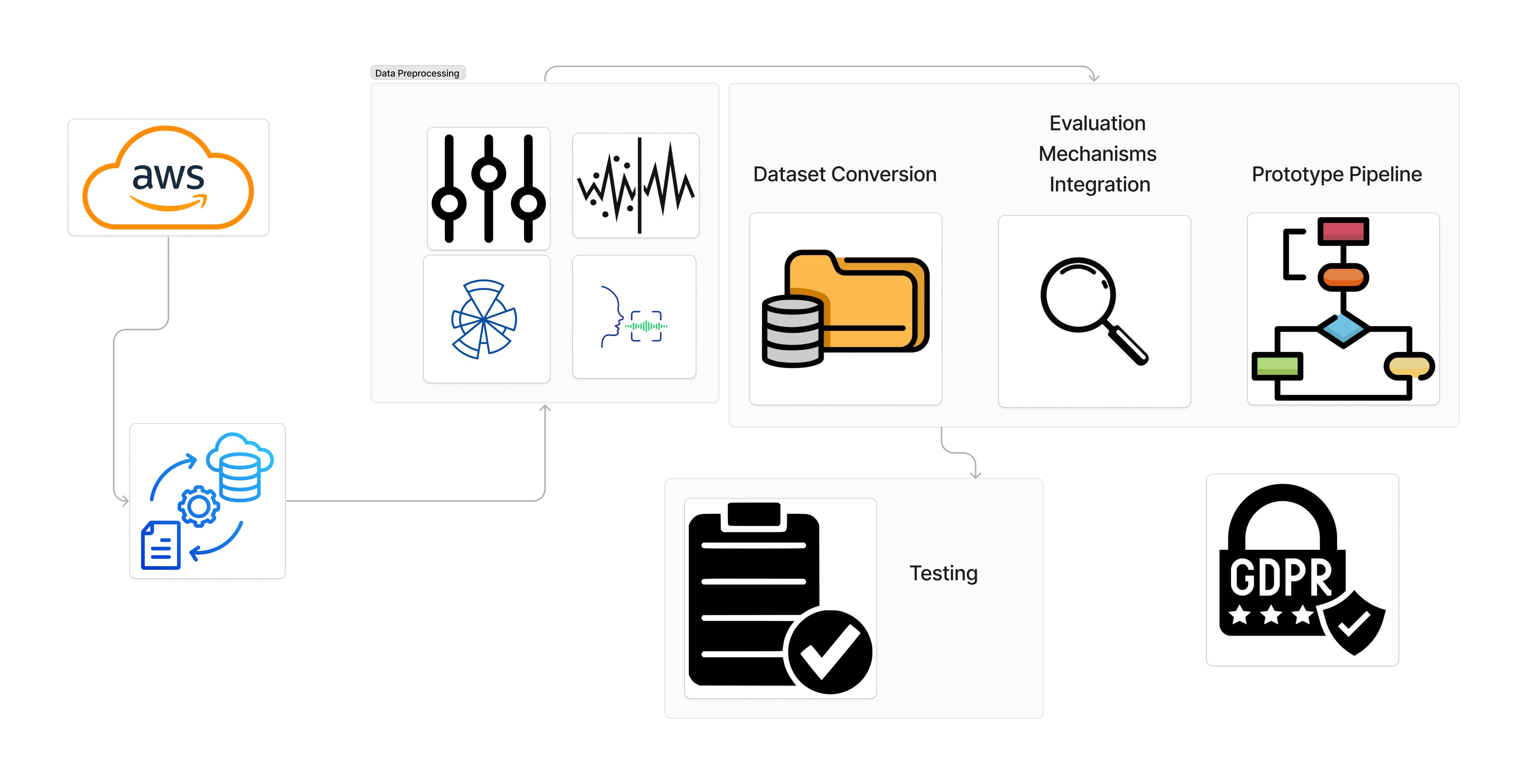
Music Evaluation System: Real-Time Singing Performance Analysis
Python
Music Evaluation System: Real-Time Singing Performance Analysis

Mar 22, 2024
By Tenacious Intelligence Team
Executive Summary
The project aimed to create a music evaluation system where users interact with a back-end to assess their singing performance. The solution offers valuable insights to users by analyzing metrics such as accuracy, identifying wrong words, and recurring mistakes, and enhancing the overall singing experience. The process involves session initialization, real-time comparison of song segments with reference lyrics, and the generation of detailed performance reports. Tenacious achieved lyric and pitch testing accuracy of an estimated 98%.
Project Overview
The project involves the development of a back-end system by Tenacious for a music company, aiming to evaluate users' singing performance and give them near real-time feedback on lyrical accuracy and pitch performance. Utilizing Python programming language and the gRPC protocol, the system allows a client application to initiate evaluation sessions where users sing along to songs. The back end compares sung lyrics with reference lyrics, providing real-time feedback and detailed performance reports. Adhering to industry coding standards and GDPR-compliant security measures, the goal is to enhance user experience by offering insightful feedback on singing accuracy while ensuring optimal system performance.
Solution Architecture
Our proposed solution revolves around leveraging Python and gRPC to develop a robust back-end system for the client. Emphasizing adherence to industry coding standards and GDPR, our solution prioritizes data security, privacy, and real-time response times. Furthermore, scalability is a key focus, ensuring the system can efficiently handle user loads as big as 500. Additionally, our solution maintains intellectual property rights with the client while committing to bug fixes, ongoing support, and new feature development post-delivery.

The project followed a structured approach focusing on key development phases and rigorous testing procedures. Firstly, we established an AWS environment to facilitate development, ensuring compatibility with our chosen technology stack of Python and gRPC. We meticulously executed various data preprocessing techniques tailored for audio data, including normalization, spectral gating, adaptive noise reduction, and voice activity detection, ensuring optimal data quality for subsequent analysis. Acquiring actual Karaoke datasets from the client, we meticulously converted them into suitable formats for detailed evaluation.
Next, we integrated multiple evaluation mechanisms to measure the quality of singing performances, extensively exploring and assessing these techniques within the context of our unique data. We ensured seamless orchestration of all project components by establishing a prototype pipeline, and optimizing performance and reliability. Finally, we rigorously tested the system's functionality and performance, including API testing of speech-to-text models, backend development, integration testing, and preprocessing testing. Throughout the process, we prioritized adherence to coding standards, GDPR, and industry best practices, ensuring the system's security, scalability, and real-time response times.
Results
| ROI Aspect | Description |
|---|---|
| Reducing Cost |
|
| Increasing Profitability |
|
| Improving Quality |
|
What's Next?
The next steps involve seamless integration into the client's application and extensive user testing for feedback and refinement. Optimization efforts will focus on improving response times and resource utilization, ensuring optimal performance during peak usage. Scalability enhancements will be explored to accommodate growing user adoption. Continuous support, bug fixes, and feature development will address evolving user needs, to enrich the user experience and maintain competitiveness in the market.
Related Blogs



